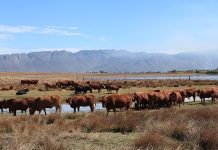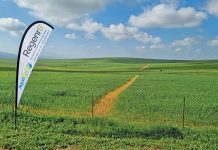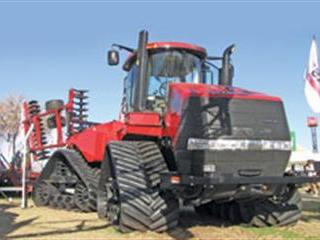The National Lucerne Organisation’s (NLO’s) new lucerne cultivar, SA Select, promises huge benefits. Producers have for many years depended on Standard, which originate as a result of natural selection of Chinese, Hunters River and Provence – cultivars that were imported during the 1930s – for the best adapted plants. was preferred over the few other available cultivars because of its high grazing tolerance, drought resistance and high tolerance of root and crown diseases, according to Derick Engelbrecht, manager of the NLO in Oudtshoorn.
Standard unfortunately has low tolerance against lucerne aphids, namely blue alfalfa aphid, pea aphid and spotted alfalfa aphid. The NLO therefore approached the Agricultural Research Council (ARC) to develop a new cultivar that is more tolerant to these pests, but that still maintains the beneficial characteristics of Standard. Standard was subsequently used as the only parent material in the breeding programme. Select was bred in the process. elect is very close to as far as drought resistance and grazing tolerance is concerned. Similar to Standard, has a subterranean crown, formed 4cm to 7cm under ground level, and side-shoots form from the crown. It is the crown of these two cultivars that gives them a higher tolerance to grazing than most other lucerne cultivars as the crown is protected against damage. It is suspected that Select might even be more tolerant to grazing than Standard, even though no dormancy has been induced. Engelbrecht believes that this might be due to the extreme high grazing pressure – 30 sheep per hectare – to which the new cultivar was subjected during the breeding programme.
The ARC is currently conducting trials to confirm this and to identify the cultivar’s carrying capacity. elect’s height is similar to that of most other cultivars, averaging 66,8cm at first bud, 83,7cm at first flowering and 89,6cm at second flowering. Stems are thin, but some thick and hollow stems might occur occasionally due to the presence of the Chinese genotypes. Flowers are usually light to dark blue, with few very dark purple flowers and few to no variegated, and no white or yellow flowers. The leaves are slightly darker than and light to medium green in colour. Leaves are relatively thin with the average length of the middle leaflet around 2,95 cm and width of 1,45 cm. Tests are being conducted to identify whether the nutritional value and digestibility of this cultivar is higher than that of other cultivars. Most importantly, the succeeded in its quest to breed a cultivar that is more tolerant to lucerne aphids. Tolerance to spotted alfalfa aphid has moderately increased, while tolerance to blue alfalfa aphid and pea aphid has increased to 67% from Standard’s 27%. Standard and also have the advantage of being cultivated for South Africa’s specific climatic conditions. “Imported cultivars in general only persist around four to six years, while Standard has a life expectancy of up to 12 years on dry lands and up to 15 years under irrigation,” Engelbrecht said.









